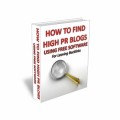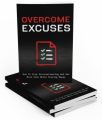Salespage Snapshot

Table of Contents
Introduction……………6
Chapter 1 – Understanding Anxiety……….8
Defining Anxiety ……8
Defining Stress……..9
The Problem with Anxiety ……10
How Anxiety Might Affect You11
Chapter 2 – Determining Your Type of Anxiety……13
General Anxiety Disorder …….13
Panic Disorder…….14
Social Anxiety Disorder ……….16
Phobias 17
Obsessive-Compulsive Disorder………….18
Post-Traumatic Stress Disorder …………..19
Separation Anxiety Disorder ..20
Chapter 3 – Practicing Mindfulness to Overcome Anxiety ….22
Benefits of Mindfulness ……….23
Chapter 4 – How to Use Breathing Techniques to Stop Anxiety …………26
The Relationship Between Stress and Breathing…..27
The Breath-Relaxation Response ………..28
Sympathetic Nervous System vs. Parasympathetic Nervous System…….28
Breathing Exercises to Reduce Anxiety ..29
Chapter 5 – How to Manage Your Thoughts to Control Anxiety………….32
Manage Your Anxiety by Managing Your Thoughts.33
What Triggers Anxious Thoughts?……….34
Chapter 6 – How to Manage Your Activities to Reduce Anxiety………….37
Learn to Keep a Schedule……38
Find Out Where You’re Spending Your Time………..38
Time Management vs. Managing Activities…………..39
Prioritization ……….39
Plan and Practice ..40
Chapter 7 – Ways to Find Instant Calm and Overcome Anxiety………….41
The Best Ways to Find Instant Calm…….42
Positive Self-Talk ..43
Guided Imagery…..44
Prayer or Meditation……………45
Practice Gratitude .46
Chapter 8 – Getting In Tune with Your Thoughts and Feelings…………..47
How to Deal with Unhelpful Thoughts …..48
Understanding Your Feelings.51
Realizing Feelings Are Neither Right or Wrong …….52
Recognizing Your Feelings ….53
Chapter 9 – The Importance of Sleep When Trying to Stop Anxiety and Worry ….54
Bedroom Environment ………..55
Bedtime Rituals …..56
Yoga and Mediation ……………57
Exercise …………….58
Daily Behaviors …..58
Chapter 10 – Changing Your Lifestyle to Regain Control of Your Life ..60
Foods to Avoid ……61
Participating in Exercise Therapy…………62
Conclusion…………..63
Sample Content Preview
Chapter 2 – Determining Your Type of Anxiety
Before you can begin to deal with your anxiety effectively, you will need to ensure that you have a good grasp of what you are up against. As opposed to mild anxiety that just about everyone experiences from time to time during their life, an anxiety disorder comes in various kinds.
General Anxiety Disorder
People, who experience general anxiety disorder, or GAD, are characterized by experiencing long lasting worry and fear over many things, which can be career, money, family, or even school. Their feelings become unrealistic, which can affect their performance in their daily endeavors. The problem with people having GAD is their inability to point out the specific fear and the problem in controlling their worry.
Generalized anxiety disorder affects about three percent of the US population, and nearly half of those who suffer from GAD are women. Those who suffer from GAD commonly complain about being in a constant state of worry over things like finances, relationships, employment, and health. While this can be said about most folks from time to time, those with GAD feel anxiety regarding a specific situation far more strongly than the situation warrants.
The symptoms of generalized anxiety disorder are the same as common anxiety, expect they are more chronic and severe. They include excessive and ongoing worrying, headaches, irritability, difficulty concentrating, restlessness, a feeling of being on edge, fatigue, sweating, trouble sleeping, nausea, upset stomach, and a sense of constant and impending doom.
Panic Disorder
A panic disorder is characterized by panic attacks. A panic attack is described as the sudden feeling of fear and rush to get away from something, scrambling to get to the nearest exit. It is the overwhelming feeling of anticipation that something bad is going to happen. Panic attacks arise suddenly and peak to a panic level in a matter of minutes and can last for hours.
Panic attacks typically manifest as sudden periods of intense fear that can include trembling, shaking, heart palpitations, shortness of breath, hot flashes, a difficulty drawing breath, chills, a fear of losing control, numbness, tingling, a sudden extreme fear of death, and impending doom. These feelings are much more intense than those that are often associated with more traditional expressions of anxiety. During a panic attack, these symptoms can become so severe that those suffering from panic attacks might be paralyzed during the entirety of the attack. One of the most significant differences between an anxiety attack and a panic attack is that an anxiety attack often takes place after experiencing a stressor, while a panic attack can materialize without a clear stressor around to trigger it. If you suffer from panic attack disorder, you may find yourself avoiding certain places, people, and situations over fears they might trigger a panic attack. There is no known cause of panic disorder, but it often runs in families, though it is unclear if this is due to genetic or environmental factors.
Social Anxiety Disorder
This kind of anxiety disorder is characterized by people who avoid socializing with a group, as they fear being judged negatively or embarrassed publicly. This type of fear includes people who experience stage frights, fear of displaying affection, and fear of humiliation. Individuals with a social anxiety disorder are known to experience extreme anxiety symptoms when they find themselves in situations where they are forced to interact with others in a social capacity. If they are unable to avoid a specific type of social function, they may begin to experience extreme physical symptoms like an increased heart rate, nausea, dizziness, and sweating.
To be diagnosed with a social anxiety disorder, a person must experiences these kinds of symptoms a majority of the time for at least six months, and the symptoms must be strong enough to impede their daily lives. If the thought of asking a stranger out or giving a presentation at work is enough to get your heart racing, then you might be suffering from social anxiety disorder. There are approximately 15 million American adults that suffer from social anxiety disorder, and the average onset for the condition is during the teenage years.
Phobias
A phobia is defined as having an irrational feeling of fear of something or a situation believing that it may cause harm. People who have a phobia try their best to avoid specific objects or situations to prevent panic attacks triggered by these irrational fears. When a fear has been triggered, the resulting anxiety can become uncontrollable.
To be diagnosed with a phobia, the excessive and persistent fear of an otherwise innocuous object or situation must last at least six months and be severe enough that avoiding the situation or object has a negative impact on your day to day life. For example, not wanting to fall off the top of a mountain is perfectly normal, but if the thought of being in a high place is enough to get your heart racing, finding yourself on the top floor of a tall building can leave you paralyzed.
Around eight to ten percent of the western world suffer from specific phobias, though only about three percent of those are in Asia and India. A phobia can come into existence in a person as a direct experience with an object or place that went horribly wrong. It could also be a result of seeing someone else experience something traumatic. These kinds of fears typically manifest between the ages of 10 and 17.
Obsessive-Compulsive Disorder
Obsessive-Compulsive Disorder, or OCD, is characterized by the mere thoughts or actions that are distressing and repetitive. People who suffer from OCD know that their compulsive reactions are irrational, but they can’t stop the feeling, and so they act to satisfy their anxiety. They try to justify the reasons behind their actions with superstitious feelings of insecurity. People who suffer from OCD usually walk in the same pattern, obsessively clean their personal items, are conscious of dust and dirt to the effect of constantly washing the objects, or the constant checking of locks, gas stoves, and light switches.
Post-Traumatic Stress Disorder
Post-traumatic stress disorder, PTSD, is an anxiety that is usually rooted form a previous life-threatening experience. Often, it is associated with the men and women who serve in the military, but it can affect anyone who has experienced a life-threatening situation. Panic attacks usually occur when these individuals are faced with a triggering factor that makes them remember a horrifying event, making them scramble to flee or fight.
Separation Anxiety Disorder
This disorder is characterized by an intense display of panic when separated from a person, place, or thing that gives them anxiety. Separation anxiety disorder symptoms are typically seen among toddlers when they are separated from their mothers or primary caregivers.
How to Tell if You Suffer From an Anxiety Disorder The extent of anxiety’s effect on an individual depends on various factors. Regardless of the severity and type of anxiety disorder, a number of symptoms are common. If you regularly exhibit any of the following symptoms, you should consult with your doctor to determine if you have an underlying anxiety disorder.
– Feelings of panic, fear, and uneasiness
– Worrying too much, especially about everyday things
– Not getting enough sleep
– Shortness of breath
– Tense muscles
– Indigestion
– Fatigue
– Being too conscious of your actions and behaviors
– Compulsive behaviors
– Dizziness
– Nausea
– Cold or sweaty hands
The good news is that anxiety disorders, just like any other mental health issues, can be treated. Consulting with a doctor is the ideal first step in order to get a proper diagnosis of your condition. With a proper diagnosis, you can become clearer on the idea of what constitutes your anxiety, what triggers it, and most importantly how you can resolve the issue.
Chapter 3 – Practicing Mindfulness to Overcome Anxiety
You may be wondering, what exactly is mindfulness and how it can be used to overcome anxiety. In a nutshell, mindfulness is all about being fully awake and being fully active and present in our day-to-day lives. It is a method for approaching life on the knowledge that the present is the only time that any of us have to be alive.
The practice of mindfulness is the ability to pay conscious attention to our internal and external experiences through an open attitude that leaves unnecessary judgment aside. It is a way of directing our awareness to the present. This allows someone to make better use of their resources, insight, intuition, and creativity.
When you practice mindfulness, you learn how to observe your thoughts and feelings on a daily basis. This helps to create space between your feelings and reactions, which allows you to be able to perceive how to react reflectively over the situation rather than in an automatic, reflexive response.
Benefits of Mindfulness
The practice of mindfulness can help you cope with many different attitudes that can contribute to your ability to live a wellsatisfied life. Focusing on the present makes it possible for you to worry less about what happened in the past, as well as what will happen in the future. This allows you to manage events as they occur and it will allow you to engage in activities of today, having full capacity to deal with events as they happen.
When you deal only with the events that happen today, you will find yourself less likely to worry over things or regret past actions. You will become less preoccupied with the future and make better connections with your social environment. Here are three beneficial purposes for why mindfulness works for individuals suffering from anxiety disorders.
Other Details- 20 Articles (TXT, DOC)
- 1 Ebook (PDF), 64 Pages
- 2 Graphics (JPG, GIF, PNG)
- 1 Salespage (HTML)
- Checklist, Resource Cheat Sheet, Mindmap, Optin Page, Social Media Images, Email Swipes
- File Size: 55,759 KB
License Details:
[YES]Can be sold
[YES]Can be used for personal use
[YES]Can be packaged with other products
[YES]Can modify/change the sales letter
[YES]Can be added into paid membership websites
[YES]Can put your name on the sales letter
[YES]Can be offered as a bonus
[YES]Can be used to build a list
[YES]Can print/publish offline
[YES]Can convey and sell Personal Use Rights
[YES]Can convey and sell Resale Rights
[YES]Can convey and sell Master Resale Rights
[NO]Can modify/change the main product
[NO]Can modify/change the graphics and ecover
[NO]Can be given away for free
[NO]Can be added to free membership websites
[NO]Can convey and sell Private Label Rights














